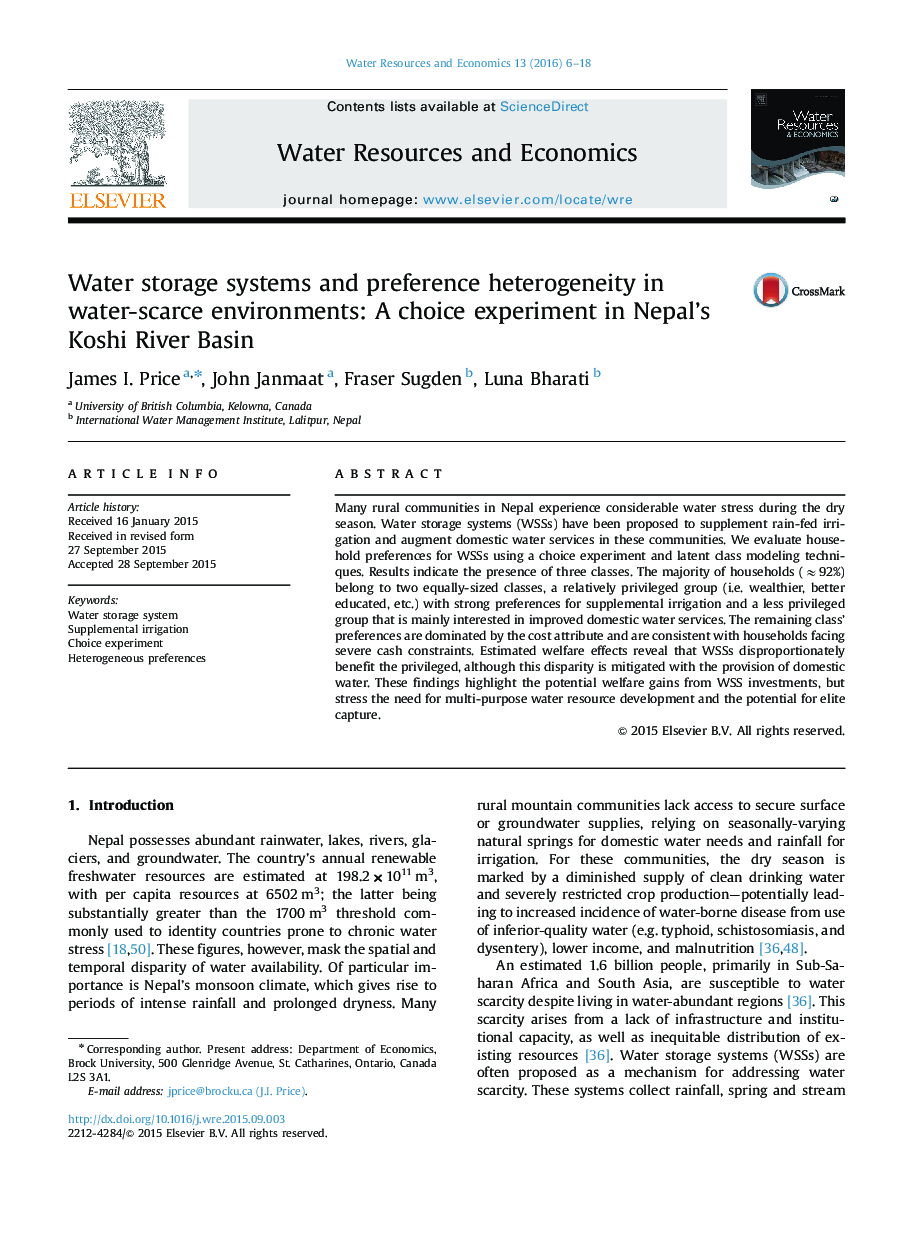| کد مقاله | کد نشریه | سال انتشار | مقاله انگلیسی | نسخه تمام متن |
|---|---|---|---|---|
| 991042 | 1481079 | 2016 | 13 صفحه PDF | دانلود رایگان |
Many rural communities in Nepal experience considerable water stress during the dry season. Water storage systems (WSSs) have been proposed to supplement rain-fed irrigation and augment domestic water services in these communities. We evaluate household preferences for WSSs using a choice experiment and latent class modeling techniques. Results indicate the presence of three classes. The majority of households (≈92%) belong to two equally-sized classes, a relatively privileged group (i.e. wealthier, better educated, etc.) with strong preferences for supplemental irrigation and a less privileged group that is mainly interested in improved domestic water services. The remaining class’ preferences are dominated by the cost attribute and are consistent with households facing severe cash constraints. Estimated welfare effects reveal that WSSs disproportionately benefit the privileged, although this disparity is mitigated with the provision of domestic water. These findings highlight the potential welfare gains from WSS investments, but stress the need for multi-purpose water resource development and the potential for elite capture.
Journal: Water Resources and Economics - Volume 13, January 2016, Pages 6–18
